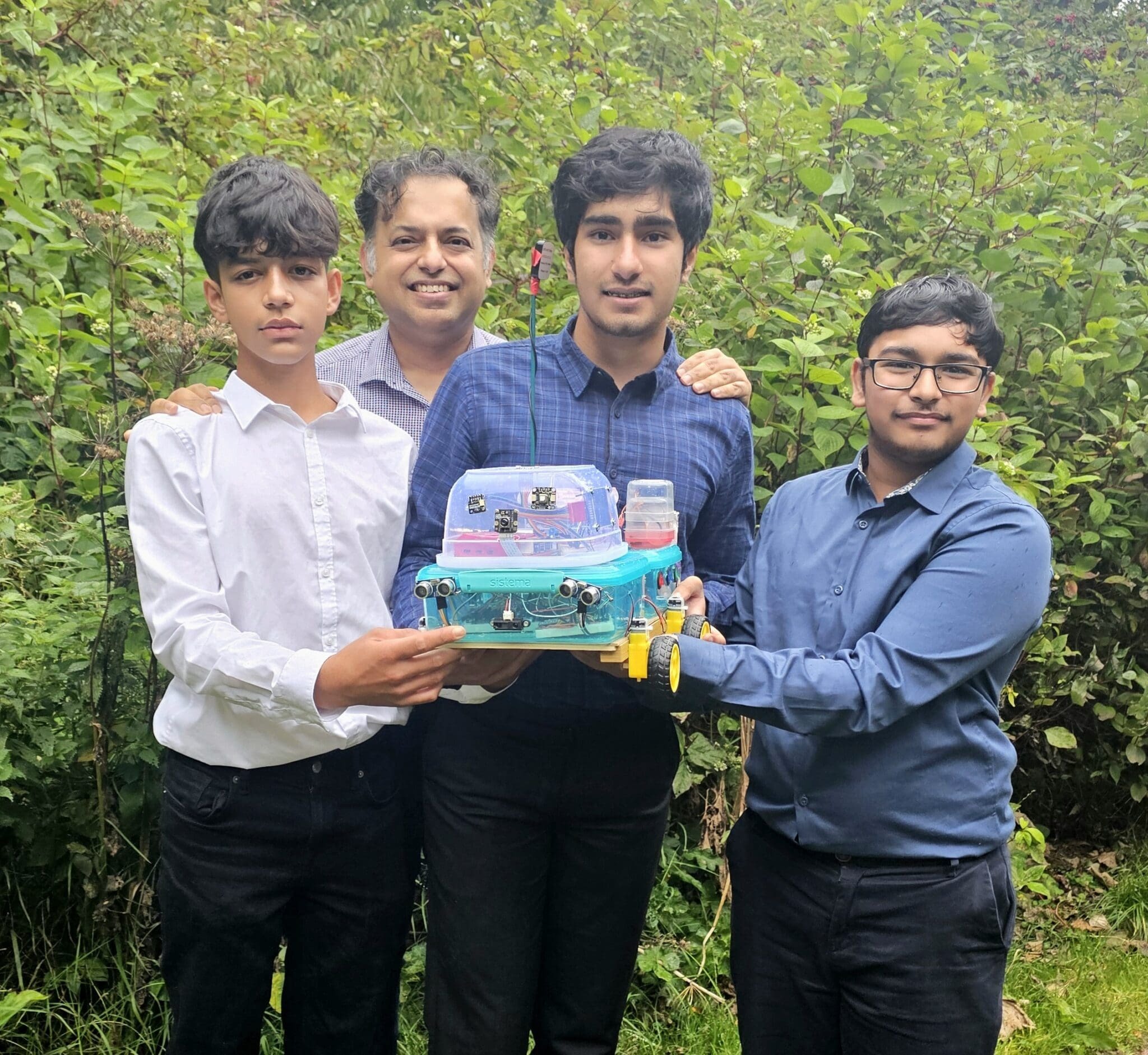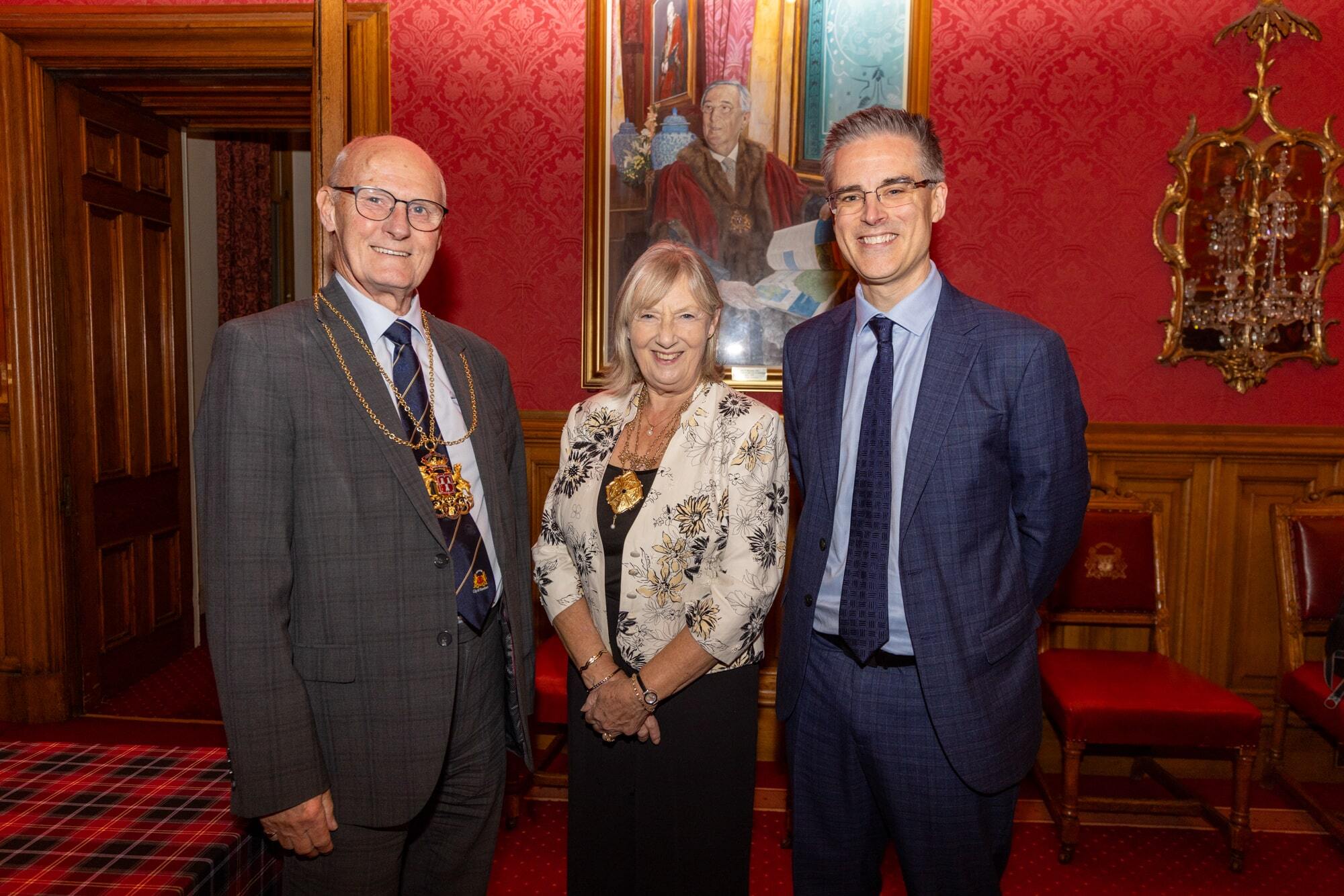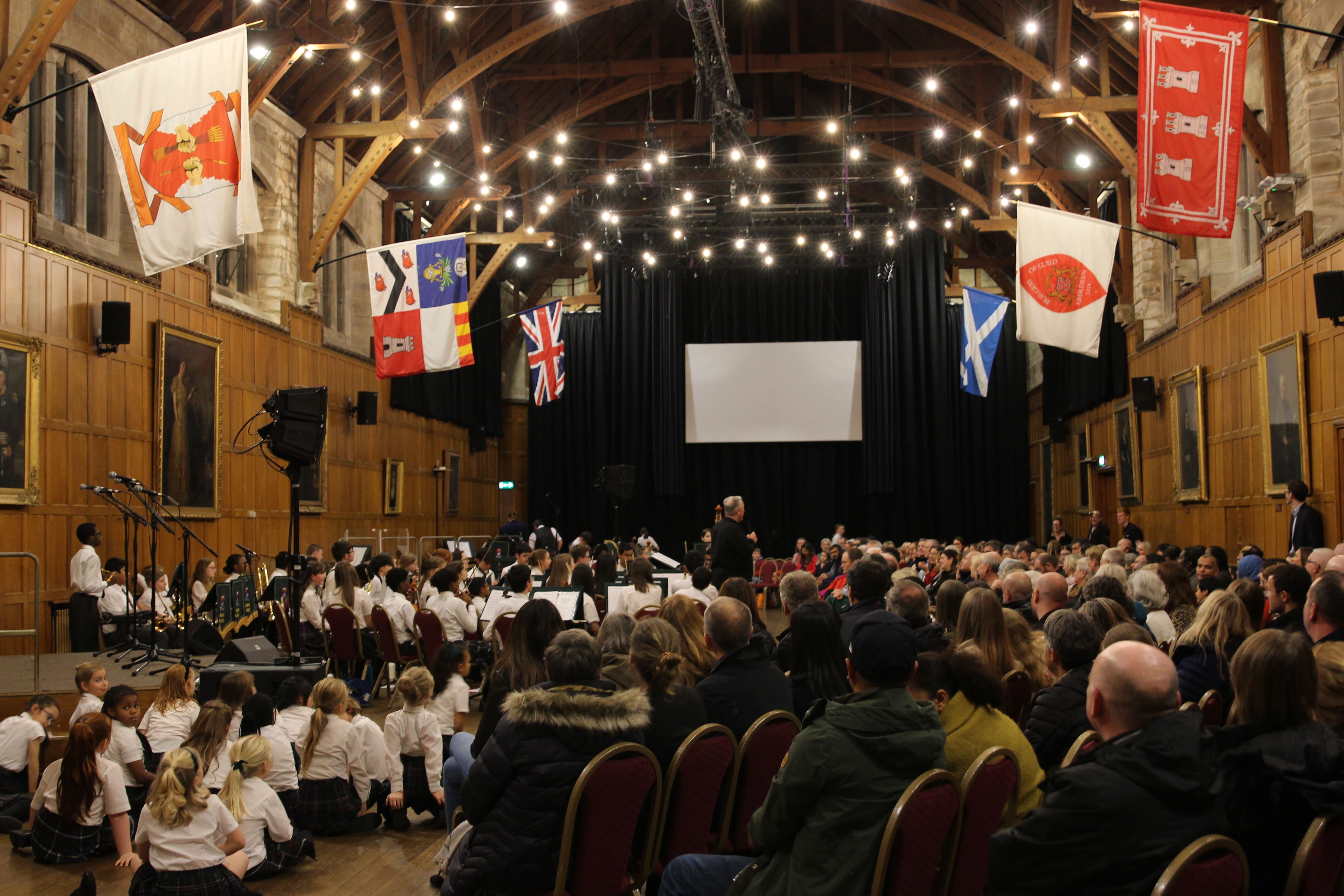Earlier this year Mr Swinton-Blancke, Teacher of Biology and Physics, held an assembly for the Upper School to raise awareness and spark conversation about the importance of representation within schools.
Introduction
I want to talk to you today about representation—what changing my name represents, what marriage represents, what legal changes represent (or misrepresent), and how LGBTQ+ people have been represented in media and culture. Most importantly, I want to talk about what we, as individuals, represent through our words and actions.
You may have noticed that the name on my classroom door recently changed. Perhaps for a moment you wondered why. What does this represent? Whilst walking into that room may be your first step towards learning to be a rocket scientists, you don’t need to be one to guess correctly that I recently got married. On the 30th of December last year, I married my handsome, kind and intelligent husband, Robert. We have so much in common- our love of science and maths, our passion for the outdoors and importance we place on friends and family. We chose to change our names to symbolize our love and commitment to each other.
But marriage is more than just a personal milestone. It is also a symbol of progress, equality, and recognition—one that has been fought for over decades and is still not a reality for many LGBTQ+ people across the world. But representation is about more than laws—it’s also about the stories we see, the voices we hear, and the reflections we find of ourselves in the world around us.
A Global Perspective: The Fight for Marriage Equality
Perhaps you would expect this assembly to have taken place in February, when we as a school recognise LGBTQ+ history, but the rights of historically marginalised groups are something we should be aware of all year. I am talking to you now not just because I married another man, but because my husband is from Zimbabwe—one of 27 African countries where homosexuality is still illegal and punishable by imprisonment. While the law is rarely enforced, LGBTQ+ people in Zimbabwe face constant threats of violence and extortion. Holding hands, kissing or simply acknowledging a relationship can be dangerous.
In stark contrast, the neighboring country of South Africa, where I was born, became the fifth country in the world to legalize same-sex marriage in 2006. The first was the Netherlands in 2000, followed by Belgium, where my family name, Blancke, originates. Today, 38 countries have legalized same-sex marriage, with Thailand being the most recent in January this year.
You may be wondering where the UK fits into this trend?
- Although there has never been a law against homosexuality between women, homosexuality between men had been punishable by death until the mid-1800’s.
- It was decriminalized in 1967 in England and Wales but took until 1980 in Scotland and 1982 for Northern Ireland to follow suit.
- Same-sex marriage was legalized in 2013 in England and Wales, 2014 in Scotland, and finally, in 2020 in Northern Ireland—making the UK the 27th country to fully recognize marriage equality.
These changes in law seem to suggest a smooth progression toward equality. But the reality is more complicated. Laws don’t always reflect public opinion, and even where rights exist on paper, discrimination can persist in daily life. Even in countries where LGBTQ+ people have legal equality, social acceptance is shaped by representation—by the mirrors and windows we grow up with.
LGBTQ+ Representaion: Mirrors and Windows
Growing up around the turn of the millennium, a time when homosexual relationships were neither criminal nor had they yet been granted the same legal rights or recognition as heterosexual relationships, I didn’t see people like me in my family, my community, or even in public life. There were very few openly gay politicians, scientists, athletes, or business leaders. Homosexuality was rarely discussed—it was something hidden, even shameful.
This lack of representation can be isolating. It makes people feel like they are the only ones like them—or worse, that there is something wrong with them.
In education, we often talk about mirrors and windows in storytelling:
- Mirrors reflect your own background, culture, or experiences, reinforcing a sense of belonging.
- Windows allow you to see perspectives different from your own, helping to build understanding and empathy.
But when I looked for a mirror—a reflection of what my future as a gay man could look like—I couldn’t find one. The idea of two men or two women in a loving, committed relationship simply wasn’t visible. Homosexuality wasn’t discussed at school, and if it was mentioned at all, it was usually as a punchline or an aspersion. Even the word “gay” had been transformed from meaning lighthearted and carefree into an insult meaning foolish or unimpressive. With no positive role models to counteract that, it’s easy to see why many young LGBTQ+ people struggle with self-acceptance.
Finding a Mirror: The Power of Storytelling
With no real-life role models, I found mirrors in unexpected places—like X-Men comics.
When X-Men first debuted in 1963, it was intended as a metaphor for the Black civil rights struggle in the USA. The two central figures, Professor Xavier and Magneto, reflected the real-life approaches of Martin Luther King Jr. and Malcolm X—one advocating peaceful coexistence, the other resisting oppression more forcefully. But progress can be slow even for a pioneering title like the X-men and it took more than ten years to transition from allegory to literal depiction when the first black character, a woman codenamed Storm, joined the team in 1975.
By the late 1970s, this metaphor expanded to include the LGBTQ+ community. Unlike other superheroes who gained their powers through accident (Fantastic Four), sacrifice (Captain America), or divine providence (Thor), X-Men characters were different simply because they were born that way. Their powers typically emerged during adolescence, just as people begin to understand their own sexuality and identity.
The mutants in X-Men were feared, misunderstood, and often forced to hide their true selves—something that deeply resonated with many young LGBTQ+ readers, including me.
However, explicit LGBTQ+ representation in comics was slow to emerge and it took until 2014, more than 50 years after his first appearance in issue number one, for Iceman, one of the original X-Men, to came out of the closet.
This was not a perfect mirror of my life, but it was a window—a story that reflected the experience of feeling different, of struggling for acceptance, of hoping for a world where people like me could live openly.
While comics have made progress, the more mainstream MCU has lagged behind.
For decades, Hollywood followed the Hays Code (1930–1968), which banned any depiction of homosexuality. Writers could only hint at a character’s sexuality—so long as they were villains, tragic figures, or comic relief. Even after the ban was lifted, these tropes persisted:
- The flamboyant comic relief, like Kenneth Williams in Carry On films.
- The bitter, lonely villains, like Jaffar in Aladdin and Scar in the Lion King.
- The tragic AIDS victims, as seen in Philadelphia and Angels in America.
- The tormented, closeted lovers, like the cowboys on Brokeback Mountain.
LGBTQ+ characters were rarely allowed to be happy or fulfilled. If they existed, their lives were defined by suffering, loneliness, or death.
However, these depictions did serve a purpose, they exposed the wider public to members of the LGBTQ+ community and helped people become more comfortable with what was unfamiliar. They opened the door for more relatable characters. The “gay best friend” became a staple in romantic comedies—always present to support the main character but rarely shown having a love life of their own. Similarly, drag queens in films like Priscilla, Queen of the Desert were portrayed as bold and defiant—but also isolated and emotionally unavailable, often using humor as a shield against a world that rejected them.
Looking back, I realize that many of these portrayals reflected real aspects of LGBTQ+ experiences, but as a young person searching for a mirror of my own identity, I found them difficult to connect with. I was looking so hard for a perfect reflection that I failed to see these portrayals for what they really were—not mirrors, but windows into the lives of others.
More recently, shows like Brothers & Sisters and Heartstopper have started to normalize LGBTQ+ characters. They have families, careers, and relationships that aren’t defined solely by their sexuality.
This shift is vital—it shows young people that they can have full, happy lives, just like anyone else.
Conclusion
Yes, we’ve made progress, but history shows that progress isn’t guaranteed—it even can be reversed.
Today, 64 countries still criminalize LGBTQ+ people, and in 12 of them, the death penalty is still possible. Even in the UK, LGBTQ+ rights rankings have fallen from #1 in Europe in 2015 to #17 in 2023, largely due to increased hostility toward transgender people.
Representation is more than just media—it’s the way we show up in the world. It’s in the mirrors we hold for others and the windows we open.
Although I never saw a likeness of the happy committed loving marriage between two men that I had always dreamed of, my dream has come true. Dreams can and do come true. But it would not have been possible without the men, women and non-binary people who have fought and campaigned for equality, to whom I am very grateful and whose courage inspires me to do my part to represent equality and tolerance. Whether as a mirror or a window, I hope that by holding my husbands hand as we walk down there street and by speaking to you today, I can help you to see a broader, more inclusive world.
The fight for equality is far from over. What role will you play in the promotion of tolerance freedom and acceptance?
- by Mr Swinton-Blancke, Teacher of Biology and Physics
Related Articles
View all news
20 November ‘25
Upper School, Science & Technology
Albyn Pupils Head to Singapore with a Robot Designed to Restore Scotland’s Forests

17 November ‘25
General
Aberdeen City Council Honours Albyn School with Civic Reception

14 November ‘25
General, Creative Arts


